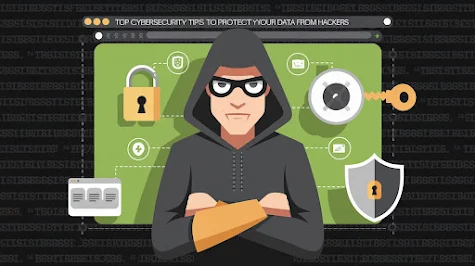Skip to main content
Top Cybersecurity Tips to Protect Your Data from Hackers
1. Use Strong, Unique Passwords
- Create Complex Passwords: Use a mix of letters, numbers, and symbols. Avoid easily guessable information (birthdates, names, etc.).
- Use a Password Manager: Store complex passwords in a secure password manager, so you don’t have to remember them all.
2. Enable Two-Factor Authentication (2FA)
- Add a Security Layer: 2FA requires both your password and a second verification method (usually a code sent to your phone or generated by an app).
- Use Biometric Options When Possible: Some services allow for biometric verification (fingerprint or face recognition), which adds further protection.
3. Keep Software Up-to-Date
- Operating Systems and Applications: Regularly update your devices to patch vulnerabilities. Cybercriminals often exploit outdated software.
- Automatic Updates: Enable automatic updates where possible to ensure your software is always up-to-date without manual intervention.
4. Use Encryption for Sensitive Data
- Data Encryption: Encrypt files containing sensitive information to make them unreadable to unauthorized users. Many operating systems offer built-in encryption tools (like BitLocker for Windows or FileVault for macOS).
- Encrypt Communication: Use encrypted messaging apps like Signal or WhatsApp for sensitive communication.
5. Regular Backups
- Backup Your Data: Create frequent backups of important documents, photos, and files. Use external hard drives and cloud storage.
- Store Backups Securely: Ensure backups are encrypted and stored in secure locations, ideally off-site or in the cloud.
6. Beware of Phishing Attacks
- Recognize Phishing Attempts: Phishing is when scammers try to trick you into revealing personal information via fake emails or websites. Be skeptical of unsolicited emails, especially those asking for personal information.
- Verify Links: Hover over links in emails to check their destination before clicking, and avoid downloading attachments from unknown sources.
7. Secure Your Networks
- Use a VPN on Public Wi-Fi: When connecting to public Wi-Fi (e.g., in cafes or airports), use a Virtual Private Network (VPN) to encrypt your internet traffic and prevent others from snooping.
- Secure Home Networks: Change default router passwords and use strong WPA3 encryption. Ensure that only trusted devices can access your home network.
8. Install Antivirus and Antimalware Software
- Use Trusted Security Tools: Install reputable antivirus and antimalware software to detect and prevent threats from infiltrating your devices.
- Regular Scans: Schedule routine scans to check for malware, spyware, and other vulnerabilities.
9. Monitor for Suspicious Activity
- Enable Account Alerts: Set up alerts for your bank accounts, social media accounts, and other services so you’ll be notified of any unusual activity.
- Check for Breaches: Use services like "Have I Been Pwned" to check if your email addresses or accounts have been part of a data breach.



Comments
Post a Comment